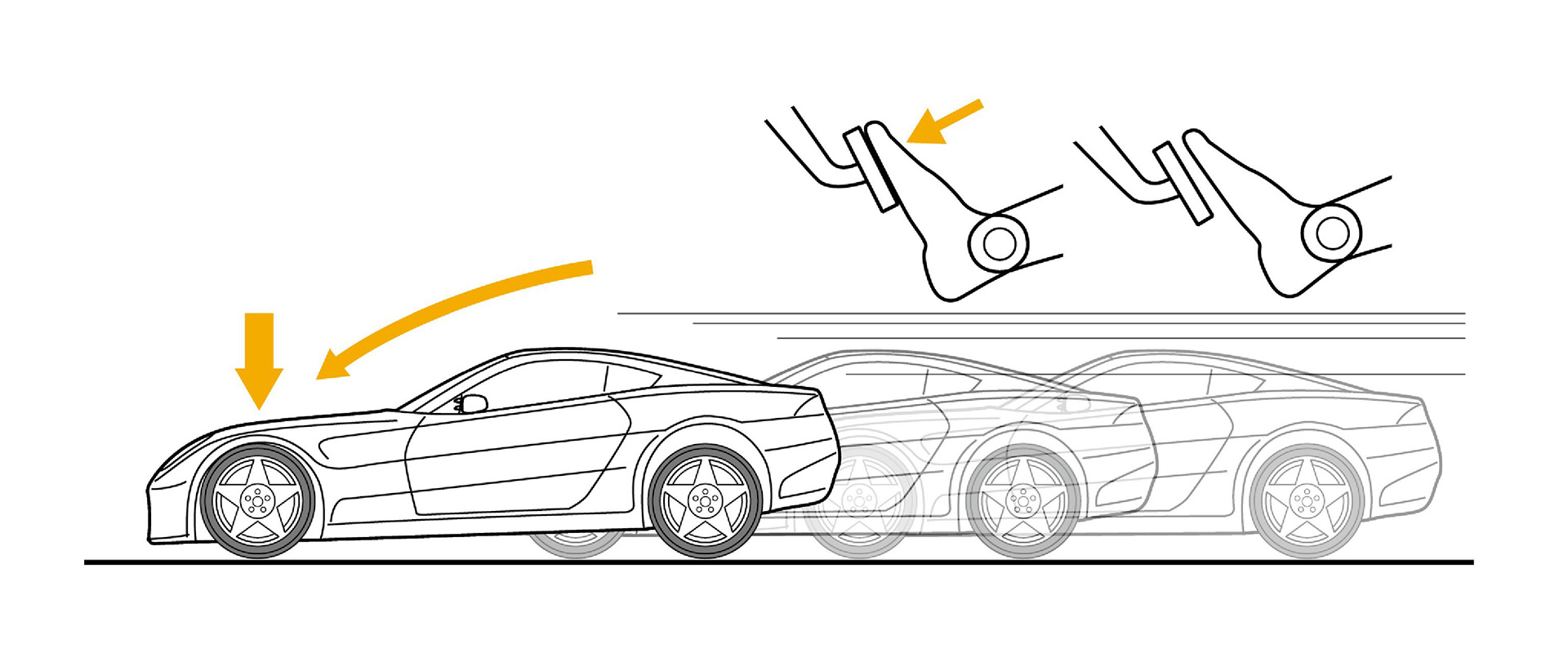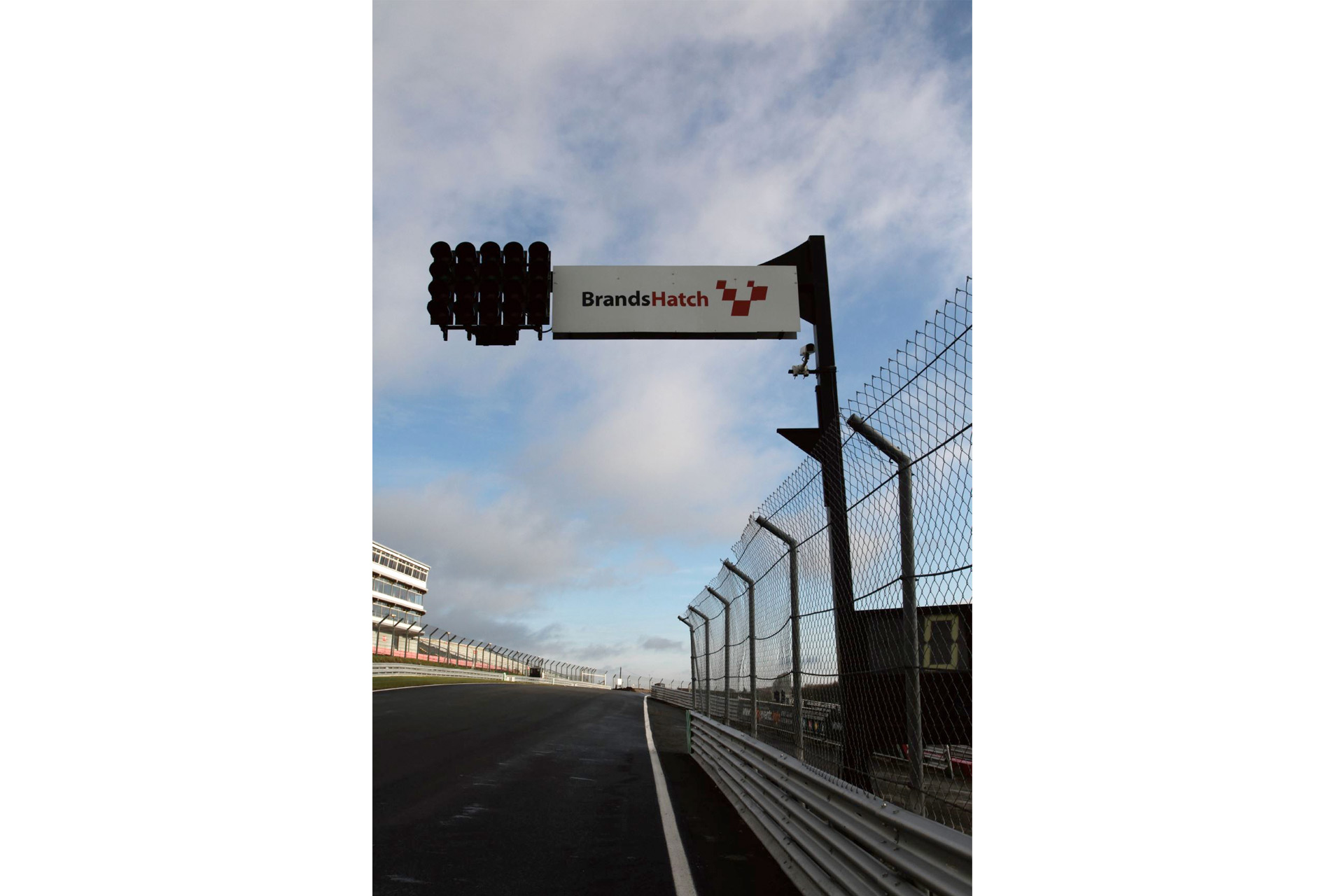Braking
Driving techniques & manners 8
Learn how tires feel just before they lock up
Modern cars are equipped with antilock brake systems (ABS) for safety – but in order to avoid danger, it’s wise to master the proper way to reliably stop a car yourself.
First, take your car to a safe environment for testing, such as a race circuit. There, test out applying full brakes. You must not step on the brakes gradually for this, but press your brake pedal to the floor as fast as you can. If the car is not equipped with ABS, you will hear screeching from the tires, and the tires will lock (slide across the ground without turning.)
When a tire locks, it loses grip, and the braking distance is extended. So, as soon as you feel the tires lock, release the brake pedal slightly. The screeching will stop, and you will feel the braking force return. Practice this while gradually increasing the speed at which you try it. The zone in which the tires produce the most grip and stop with the shortest braking distance possible is just before the tires lock, so this practice will help you to find the tire’s most effective range.

Fig. 8-1: The range in which tires exert the most brake force is just before the brakes lock. Step decisively on the brake, and learn the sensation of your tires locking.
Once you’ve mastered this technique, you are well on your way to perfect braking. When actually braking, you apply the brakes as if to lock the tires, then release them just slightly the moment they lock. Once you feel the tires unlock, you apply the brakes again heavily. You would repeat this rapidly, in a short amount of time. This is exactly what the ABS system equipped on many cars today does for you.

Fig. 8-2: When starting to brake, do so hard enough to lock the tires. When you feel that the tires have locked, release the brake pedal slightly. The graph above shows this in action.
The true show of skill in a race is braking at extremely high speeds. Often in the first corner of highspeed circuits, you have to apply full brakes at over 200km/h. In these situations, you may need to start braking 100 meters or so before the corner – so you must know exactly when to apply the brakes. Racing drivers use trackside signs as markers to judge where to start braking. To practice, start by braking too early, then gradually delay your braking to gauge where you should begin for the best results.

Fig. 8-3: On long straights, find something you can use as a reference for your braking point (Brands Hatch, UK).
